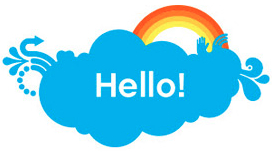WHAT
This week in one of our university classes we explored media advertisements and how to analyze them. There are many ways to analyze advertisements - many were outlined in class with some examples being…
- The 5P’s of advertising by Frank Baker
- Product, purchaser, pitch, placement, presentation
- The Language of Persuasion
- Techniques used to persuade people are ranked and categorized in levels
- Basic: Easily identified
- Intermediate: Needs a more critical stance
- Advanced: Requires judgement
- Weasel words
- Quality, ideal, superior, enriched, perfect, bargain, performance, special, etc.
- ‘Authorship, Purpose, Message, Meaning, Representation, Reality’ model adapted by Renee Hobbs
This week I was able to complete two tasks: Create an infographic and test my Digital Learning Horoscope. The results are posted below. My infographic was completed on easel.ly however infogr.am is also a nice site to use. The Digital Learning Horoscope can be completed here.
SO WHAT
Now that I understand how to properly analyze and understand media advertisements, I will continue practising these methods to deconstruct complex ads. Why? Because I know that advertising uses many tactics to draw people in and persuade us to believe everything they say. It is important to know that ads aren’t 100% truthful and that they can have hidden motives. I believe that creating the infographic was important for me to do so I could understand how easy it is to visually represent information - anyone can do it. It was also important for me to take the digital test because it allows me to see what media personality I have, how I will approach technology in the classroom, and what areas I need to work on.
NOW WHAT
Now that I have found this new information, I can’t wait to share it and experiment with my future students. I would like to share this knowledge so that students will be able to critically analyze media ads and discover the truth for themselves. This is a skill that they can take anywhere in the future and keep forever. This is also a very underrated skill that many teachers will not be bringing into the classroom. However, it is very important that we do; students see thousands of ads every week and are susceptible to their tactics and effects (without the proper knowledge). It is up to us to teach students how to challenge these ads and come to their own conclusions. Creating the infographic was extremely fun - I want to show my students how easy it is to portray information in visual format. On the other hand, the Digital Learning Horoscope showed me that I have a lot to offer future students and that I can use my knowledge of technology to not only engage students, but teach them of the risks and the lies that may be out there if we don’t always have a critical eye.








